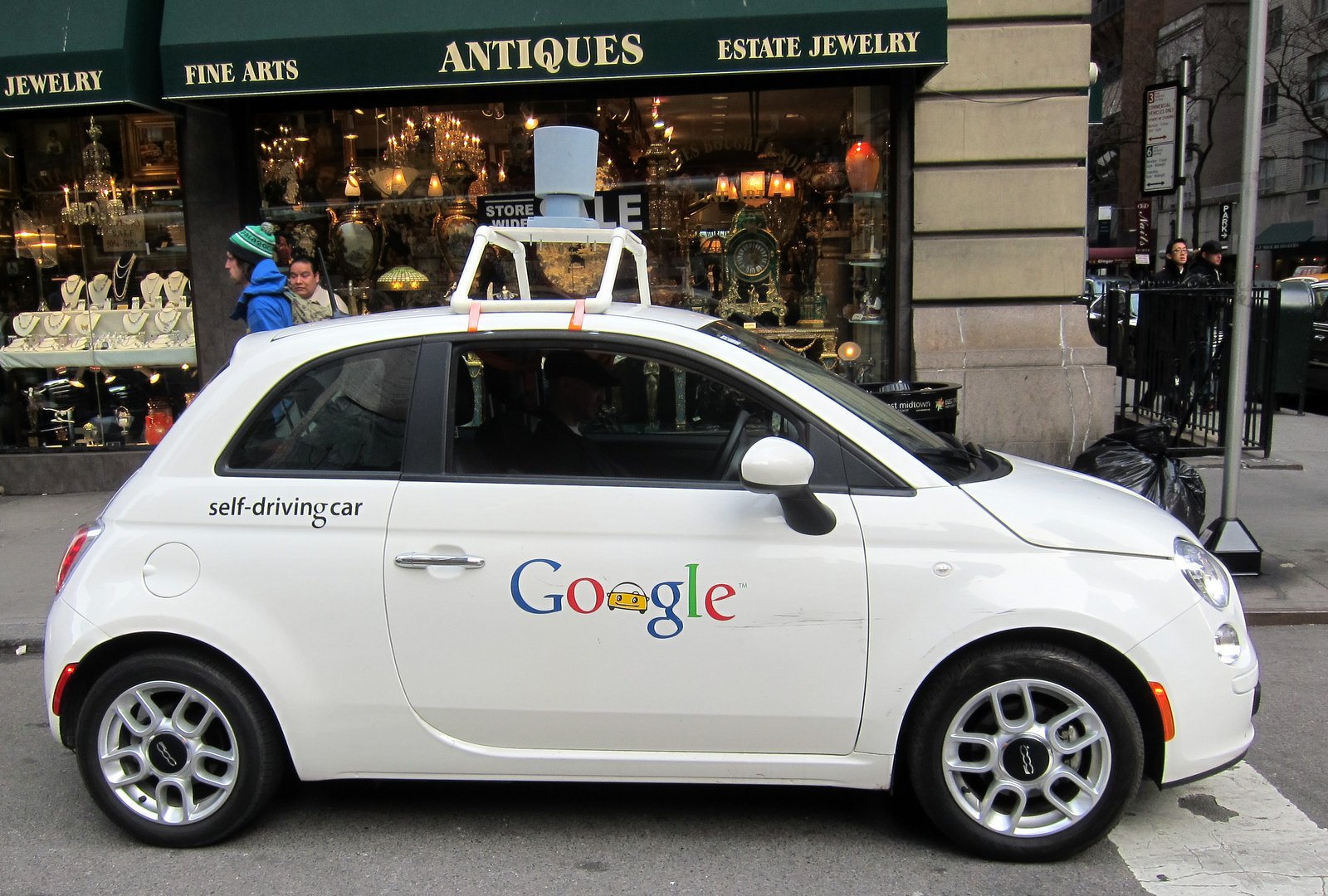Google’s Self-Driving Car – publicity stunt or just failure?

Woo-hoo, a google self-driving car. Ok, I’m impressed…not. Well, if you look at what it’s trying to achieve, it’s not actually a great idea. Especially for Google who needs to start making money from these genius little toys.
A two-seater prototype of the vehicle was unveiled Tuesday by Google CEO Sergey Brin during an onstage interview at the Recode Code Conference in Palos Verdes, Calif. Instead of the car controls indispensable to today’s drivers, Google’s prototype relies on built-in sensors and a software system to safely maneuver the vehicle.
Google says it’s made the Self-Driving Car for one major reason: safety. By removing the most incompetent link in the car chain — the human operator — Google believes it can drastically improve road safety.
As Jalopnik’s new Silicon Valley Editor Damon Lavrinc says, “There’s about 33,000 road fatalities in the US each year. Google self driving car might be able to cut that by just .01 percent in the first year, but extract that over 20 years and increased adoption…”
The most thorough analysis of crash causation ever, 1979’s Tri-Level Study of the Causes of Traffic Accidents found, “human errors and deficiencies” caused at least 90 percent of road accidents. A study performed in the UK confirmed that its not just American drivers who are particularly inept, finding that 88 to 89 percent of accidents there were due to human error. The results are definitive — on the road, we’re on own worse enemy.
Earlier this month, the Self-Driving Car’s project leader, Christopher Urmson, put a personal note on the program’s safety goal, telling The New York Times that he hoped the car would be commercially available by the time his own son turns 16 — the legal age to begin driving in most American states — in 2019.
The thing is, Mr. Urmson’s son would be even safer if he never set foot in a car in the first place. And so would the pedestrians, cyclists and other road users travelling around him. Cars are inherently dangerous, something the Self-Driving car does not and cannot address. That’s why it fails.
Google hasn’t released an overall investment, projected, to-date or otherwise for this project. Again according to Damon, each of the 10 or so prototypes that have hit the road so far — retrofitted Lexus, Audi and Toyota models — has carried, “$250,000 to $300,000 worth of equipment.” That’s $2.5 million right there and we can assume many tens and hundreds of millions of dollars, if not much more, will need to be spent before driverless cars reach consumer hands.
Inarguably, that’s enough money to make a heavy investment in public transportation. And, guess what’s an awful lot safer than cars? You guessed it…
Given the current rate of 33,000 or so fatalities per year on American roads, if we assumed every single person suddenly bought a Self-Driving Car and those cars miraculously experienced no faults, no pedestrians walked out in front of them and they collided with no cyclists, we’d still be looking at 3,300 road fatalities a year. Know how many people die in rail transit related accidents every year? 106. And 18 of those are where rails cross roads. How many bus occupants die a year? 54. Even if Google’s car eliminates all user error from roadways, thousands more people will still die on roads than will be killed while riding a bus, train or other forms of public transportation. Statistically speaking, riding in a car, even one driven by Google, will always be considerably more dangerous than riding on public transportation.
Of course, the google self-driving car won’t be able to eliminate all accidents. While media ride alongs so far have reported extraordinarily safe operation, not all road accidents can be attributed to driver error. Note the difference between “driver” and “human,” even miraculous self-driving cars can’t keep pedestrians off roads or account for the knock-on effects of accidents with the environment surrounding them. Even if the car is able to identify pedestrians in the road and take evasive maneuvers to avoid them, just like you and I, it can’t stop a pedestrian from stepping out into the road, too close to the car to take evasive action. It can’t stop a car door from opening, forcing a cyclist into the path of traffic or stop a kid from running after a ball into a busy street.
But, what if that street isn’t busy? What if the child is unable to access the roadway? What if cyclists aren’t forced to share road space with cars? That’s been the focus of much road safety research and progress elsewhere. The best way to reduce or eliminate pedestrian and cyclist fatalities has been shown to be separating them from traffic, or simply eliminate that traffic altogether.
The zero-emission, all-electric, Self-Driving Car also fails to address what’s probably the most pressing issue currently facing transportation in America — over crowded roads. It’s one more car, not one less. Yet again, this issue is best addressed through public transportation and removing cars from out city centers. Where there are no cars, one can’t run you over.
I have a dystopian fantasy of the Bay Bridge jammed full with driverless cars, each passenger quietly resenting the next while tapping away on a keyboard, filling time that was once devoted to driving with monitored productivity. In more short term reality, the Self-Driving Car is still going to take a long time to commute from Mountain View — where Google pays low taxes — to San Francisco — where its employees want to live — it’s still going to have an awful hard time finding a parking space once its there, its presence in the space will still incrementally slow overall traffic and it’ll still get dinged by other drivers, damaged by pot holes and be subject to parking tickets.
And the crazy thing is, the technology to eliminate all those problems — the same technology that could keep Mr. Urmson’s kid safe — already exists, is already proven and is already widespread in its use across other countries.
Currently, the Bay Area plans to expand its BART light rail system south to Silicon Valley, finally giving San Francisco residents a practical means to commute to their jobs. Its completion is scheduled for 2025. I wonder what an effect an infusion of Google’s capital would have on that deadline?




